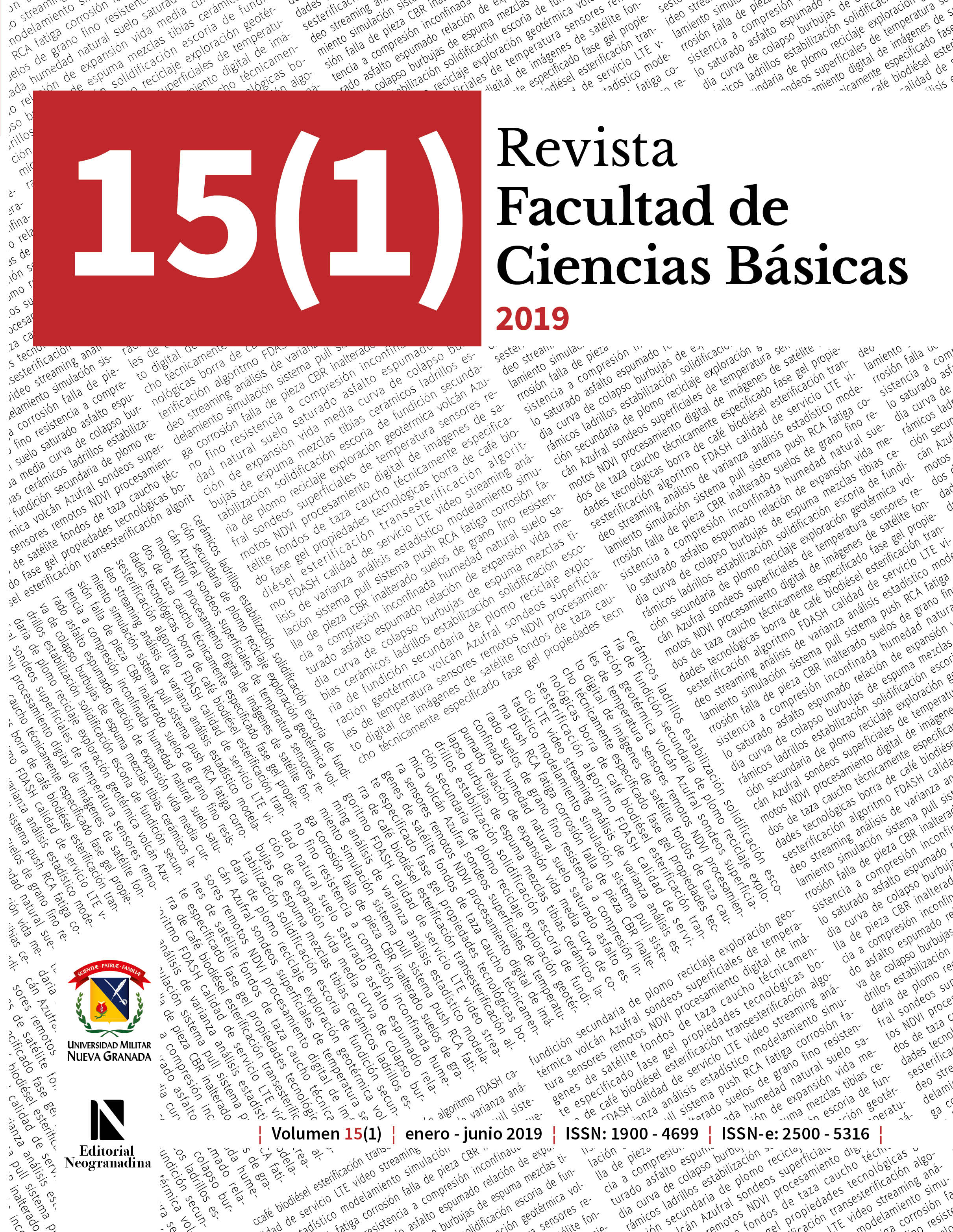Chemical Composition of the Essential oil Extracted from Salvia Leucantha Cav. (Lamiaceae) Flowers
Abstract
The essential oil (AE) in Salvia Leucantha Cav. flowers was extracted by steam distillation with a yield of 0.16%. To determine the composition of the S. leucantha Cav. essential oil, the authors used a gas chromatograph coupled to a Shimadzu QP-2010 plus mass spectrometer. Next, the results were compared against the NITS-08 database and the retention rates (IR) reported in the literature. In addition, the results established the presence of monoterpenes (M) such as, bornyl acetate (9.8%), α-pinene (4.4%), d-camphene (3.3%), and β-pinene (2.4%), and of sesquiterpenes (S), such as karyophylene (10.0%), β-farnesene (10.7%), germacrene D (10.6%), and aristolene (17.2%), wherein aristolene stands out as a major component of the essential oil extracted from S. leucantha flowers. Lastly, two aliphatic chain hydrocarbons known as “octadecane” and “icosane” were further identified.
Downloads
References
Adams, R.; Identification of essential oil components by gas chromatography / mass spectroscopy. Allured Publishing Corporation. USA, p.468, 2007.
Ali, A.; Tabanca, N.;Demirci, B.; Blythe, E.; Ali, Z.; Husnu, C.; Khan, A.; Chemical Composition and Biological Activity of Four Salvia Essential Oils and Individual Compounds against Two Species of Mosquitoes, Journal of agricultural and food chemistry, v 63. p. 447-456 .2014
Aoyagi. Y.; Yamazaki, A.; Nakatsugawa, C.; Fukaya, H.; Takeya, K.; Kawauchi, S.; Izumi, H. Salvileucalin B, a novel diterpenoid with an Unprecedented Rearranged Neoclerodane Skeleton from Salvia leucantha Cav. Organic letters, v. 10, p. 4429-4432. 2008
Amir, R.; Somayeh, S.; Omidreza, F.; Jianbo, X.; Bioactive phytoquemicals from shoots of Salvia species, Phytochem Rev, v. 15, p. 829-867, 2016.
Cely, W.; Matulevich, J.; Castrillon, W. Triterpenos y esteroles de Salvia leucantha (LAMIACEAE) y evaluación de su capacidad antioxidante. Revista Facultad de Ciencias Básicas, v. 10, p. 68-79, 2014.
Fernández, J. Revisión taxonómica de Salvia sect. Siphonantha (Labiatae). Anales del Jardín Botánico de Madrid, v. 63, p.145–157, 2006.
Goodner, K. Practical retention index models of OV-101, DB-1, DB-5, and DB-Wax for flavor and fragrance compounds. LWT - Food Science and Technology, v. 41, p. 951-958, 2008.
Jassbi, A.; Zare, S.; Firuzi, O.; Xiao, J. Bioactive phytochemicals from shoots and roots of Salvia species. Phytochem Rev, v. 15, p. 829-867, 2016.
Kabouch, A. & Kabouch, Z. Bioactive diterpenoids of Salvia Species. Studies in Natural Products Chemistry, v. 35, p. 753-832, 2008.
Lia, L.; Qia, Q.; Liuc, S.; Wua, X.; Zhaoa, Q.; Neo-clerodane and abietane diterpenoids with neurotrophic activities from the aerial parts of Salvia leucantha Cav, Fitoterapia, v. 127, p. 367-374, 2018.
Negi, A.; Mohammad, S.; Javed, A.; Anand, B.; Steam volatile terpenoids from Salvia leucantha, Journal of Essent Oil Res, v. 19, p. 463–465, 2007
Rojas, L.; Visbal, T.; Morillo, M.; Rojas, Y.; Arzola, J.; Usubillaga, A.; The volatile constituents of Salvia leucantha, Natural Products Communications, v. 6, p. 937-938, 2010.
RONDON, M.; VELASCO, J.; MORALES, A.; ROJAS, J.; CARMONA, J.; GUALTIERI, M.; HERNANDEZ, V. Composition and antibacterial activity of the essential oil of Salvia leucantha Cav. cultivated in Venezuela Andes. Revista Latinoamericana de Química, v.33 (2),p. 55-59, 2005.
Upadhyaya, K.; Dixit, V.; Padalia, R.; Mathela, C. Terpenoid composition and antioxidant activity of essential oil from leaves of Salvia leucantha Cav. Journal of Essential Oil Bearing Plants, v. 12, p. 551-556, 2009. Ejemplo: Beare D. y McKenzie E. 1999. Continuous Plankton Recorder data and diel vertical migration in stage V and VI Calanus finmarchicus: a statistical analysis, Fisheries Oceanography (8): 119-126.











